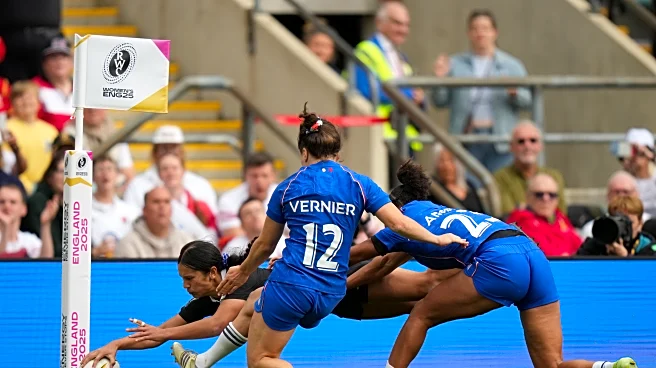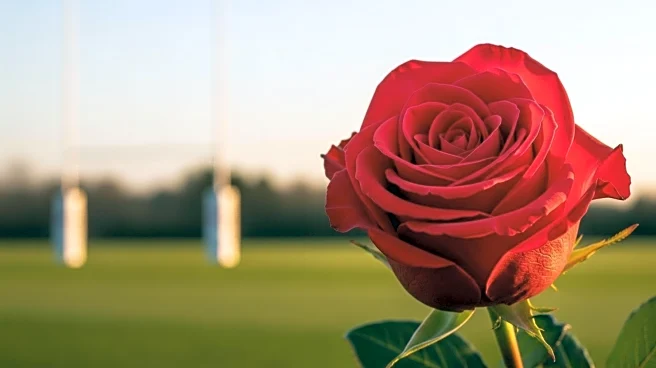What is the story about?
What's Happening?
The Women's Rugby World Cup has concluded, showcasing impressive performances and highlighting the growing popularity of women's rugby. The tournament was marked by standout players like Canada's Sophie de Goede and breakout stars such as New Zealand's Braxton Sorensen-McGee. Despite the success, the event also revealed disparities in team performance, with calls for increased investment in women's rugby to ensure more competitive matches in future tournaments. The World Cup was praised for its organization and the positive atmosphere it created, drawing large crowds and significant media attention.
Why It's Important?
The Women's Rugby World Cup serves as a pivotal moment for the sport, emphasizing the need for greater financial support and development programs to bridge the gap between top teams and emerging nations. The tournament's success demonstrates the potential for women's rugby to grow as a major sport, attracting new fans and increasing participation at all levels. Investment in women's rugby is crucial for fostering talent and ensuring the sport's sustainability and competitiveness on the global stage.
What's Next?
Looking ahead to the next World Cup in 2029, there is a strong push for national unions and World Rugby to invest more in women's rugby. This includes funding for grassroots programs, increased match opportunities, and better support for players. The goal is to create a more level playing field where more teams can compete at the highest level, enhancing the overall quality and appeal of the tournament.
Beyond the Headlines
The Women's Rugby World Cup highlights broader issues of gender equality in sports, underscoring the need for equal opportunities and resources for female athletes. The tournament's success could inspire other sports to invest in women's competitions, promoting inclusivity and diversity in athletics. Additionally, the positive reception of the World Cup may encourage more young women to pursue rugby, contributing to the sport's growth and evolution.
AI Generated Content
Do you find this article useful?














